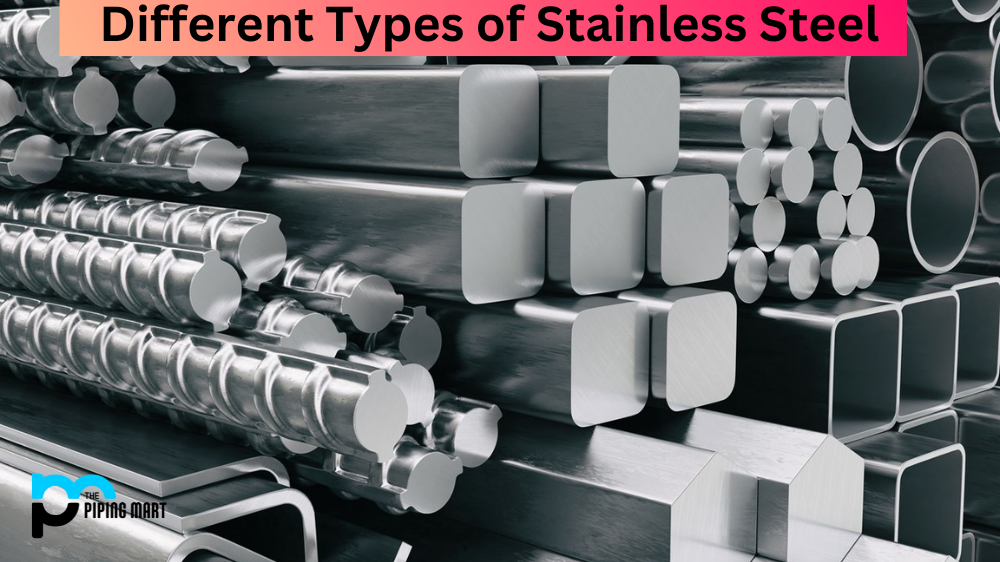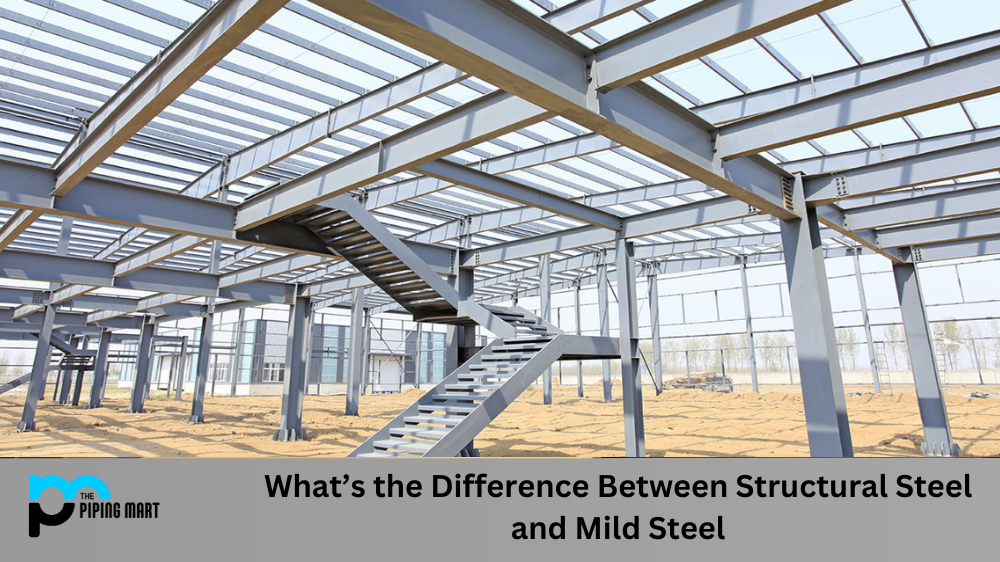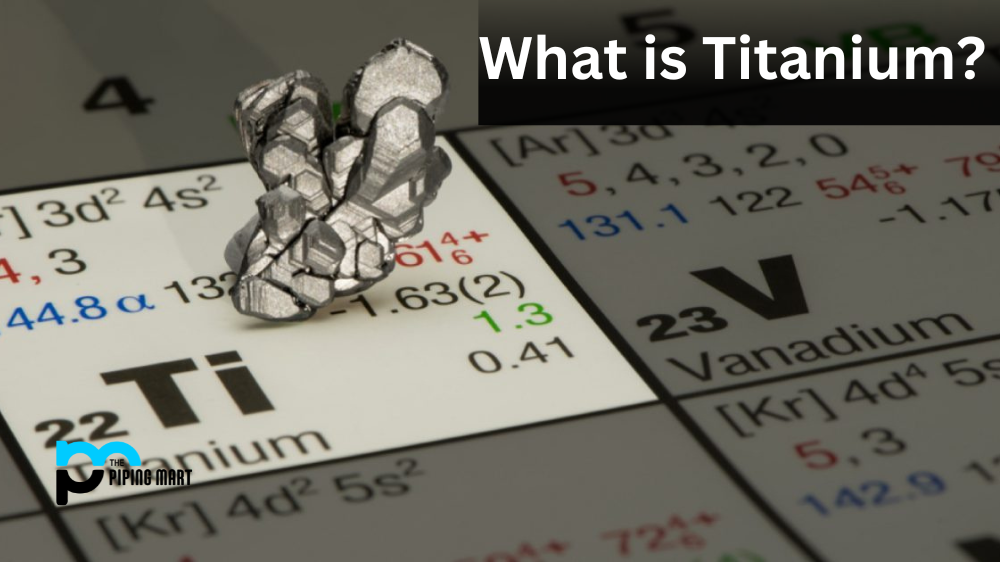Stainless steel is an incredibly versatile material used in a wide range of products and applications. But did you know there are different types of stainless steel? Knowing the differences between these types can help you choose which type is best for your specific project or product. In this blog post, we’ll explore the various types of stainless steel and how they differ from one another.
What is Stainless steel?
Stainless steel is an alloy of steel and chromium, with a minimum chromium content of 10.5% by mass. Stainless steel has some important and versatile properties, including its low cost, high strength, resistance to staining, corrosion, and rusting, and flashier luster. Based on their composition, industrial-grade stainless steel varieties are classified as austenitic, martensitic, or ferritic. Austenitic is a chromium-nickel-iron alloy (Cr 16%–26%, Ni 6%–22, and low carbon content), Martensitic is a chromium-iron alloy (Cr 10.5%–17%, with some carbon content), and Ferritic is a chromium-iron alloy (Cr 17%–27%, with a low carbon content). Many kitchen utensils are made of ferritic stainless steel.
Types of Stainless Steel
Stainless steel has been a favorite choice for cookware and other functional items due to its resilience, affordability, and durability. There are many different types of stainless steel available on the market today; each type possessing unique characteristics that make it suitable for specific applications. The most commonly used grades are 304 and 316, both renowned for their flexibly while maintaining good corrosion resistance. Type 410 is a good choice for machining because of its hardenability, while 17-4 PH brings high strength and is often found in applications involving nuclear reactors. No matter what the application, there’s no doubt that one of these stainless steel variants will get the job done right!
Austenitic Stainless Steels
Austenitic stainless steels are the most widely used type of stainless steel because they have excellent corrosion resistance combined with good formability and weldability. They also have a higher nickel content than other stainless steels, giving them superior strength at temperatures as low as -270 degrees Celsius. The most popular austenitic grades are 304 and 316, which contain 18% chromium and 8% or 10% nickel, respectively. These grades are widely used in food processing equipment, medical devices, kitchen sinks, power plants, and chemical processing systems.
Ferritic Stainless Steels
Ferritic stainless steels are highly magnetic and contain a high proportion of chromium but very little nickel. This makes them much cheaper than austenitic grades but also less resistant to corrosion in certain environments. Ferritic grades are often used for automotive exhaust systems because they don’t corrode when exposed to high temperatures or aggressive chemicals like salt water. They are also used in cookware and cutlery due to their low cost and attractive appearance. Common ferritic grades include 430, 439, 444, 409L, 441, and 436L.
Martensitic Stainless Steels
Martensitic stainless steels have a similar composition to ferritic grades but with higher levels of carbon (C). This gives them increased strength while still maintaining some ductility and toughness at low temperatures. They can be hardened using heat treatment processes such as quenching or tempering to achieve even greater strength levels at higher temperatures, up to 600°C (1112°F). However, martensitic grades typically don’t perform well in corrosive environments, so they aren’t suitable for many applications that require resistance to highly acidic solutions or extreme weather conditions.
Duplex Stainless Steel
Duplex stainless steels are essentially ferritic and austenitic stainless steels combined. They are stronger than ferritic and austenitic stainless steels but contain less nickel than austenitic steels. As a result, they are less expensive than austenitic steels.
The underwater oil industry makes extensive use of duplex stainless steel. This is primarily due to its corrosion resistance, which allows it to withstand the corrosive nature of salt water for extended periods.
Duplex stainless steels are malleable and weldable and can be formed into various components. Two of the more common types of duplex stainless steel include S31803 stainless steel and S32205 stainless steel.
304 Stainless Steel
304 stainless steel is the most commonly used type of stainless steel. It comprises at least 18% chromium and 8% nickel and contains carbon, manganese, silicon, phosphorus, sulfur, and nitrogen. 304 stainless steel is non-magnetic and highly resistant to corrosion due to its composition. It is also easy to clean, making it ideal for medical equipment or food processing machinery. 304 stainless steel is a versatile and popular metal alloy with numerous uses across multiple industries. It has excellent corrosion resistance and durability, making it ideal for both indoor and outdoor applications. This type of stainless steel is most commonly used for producing kitchen and restaurant equipment, medical devices, pharmaceutical containers, valves, heat exchangers, nuts, bolts, and other fasteners, as well as industrial pipes. Additionally, Type 304 stainless steel is often used to make food-handling stations on ships since its resistance to saltwater corrosion makes it reliable even in the most extreme conditions. With such a broad array of uses that keep up with modern demands, Type 304 stainless steel truly deserves its reputation as an essential material.
316 Stainless Steel
316 stainless steel is an alloy that consists of small amounts of chromium, nickel, and molybdenum. It is often referred to as “marine grade” because of its superior resistance to pitting and corrosion in seawater environments. This makes it the ideal material for components used in marine construction projects that must withstand extreme weather and other elements. Type 316 stainless steel is preferred over other types of stainless steel because it has a high yield strength and tensile strength, which makes it much more durable and less likely to suffer damage over time. Additionally, its natural sheen and resistance to fingerprinting make it visually pleasing, making it perfect for use in producing furniture or luxury items.316 stainless steel has a higher nickel content than Type 304, making it more resistant to corrosion and oxidation, and heat damage. It also has molybdenum added to its composition, which further increases its resistance to corrosion in saltwater environments. This type of stainless steel is typically used in industrial settings where frequent exposure to corrosive elements occurs, such as marine applications or chemical production plants.
430 Stainless Steel
430 stainless steel is a low-carbon, ferritic stainless steel which has the improved corrosion resistance that comes with the addition of chromium at 17% content. It offers good formability, corrosion and heat resistance and mechanical properties making it ideal for a wide variety of tasks. Its non-hardenable by heat treatments and possesses high ductility as well as good oxidation resistance up to 870°C in intermittent operation. Commonly found in kitchenware and home applications, it’s known for its attractive polished finish. As an alternative to Type 304 stainless steel, SS 430 has many similar properties yet significantly less strength and hardness than the more common Type 304 grade material. 430 stainless steel contains a slightly lower amount of chromium than Type 304 but still provides excellent corrosion resistance and strength when exposed to normal conditions. It can be used for decorative purposes because it can be polished easily or even coloured through electrolysis processes. However, it lacks the same durability as other types of stainless steel due to its low nickel content. This type of stainless steel is commonly used for automotive parts or household appliances that don’t require high levels of strength or resistance against corrosion but need an attractive finish at an affordable price point.
Conclusion:
In conclusion, there are three main types of stainless steel—austenitic, ferritic and martensitic—each with its own unique properties that make it suitable for different applications depending on your needs. Austenitic stainless steels offer excellent corrosion resistance combined with good formability and weldability but have higher costs due to higher nickel content; ferritic grades offer lower costs but less corrosion resistance; martensitic grades offer higher strength but poor corrosion resistance; Martensite is usually hardened by heat treatment processes such as quenching or tempering at high temperature up to 600°C (1112°F). Ultimately it’s up to you to select the correct type of stainless steel based on your requirements and budget!

Abhishek is a seasoned blogger and industry expert, sharing his insights and knowledge on various topics. With his research, Abhishek offers valuable insights and tips for professionals and enthusiasts. Follow him for expert advice on the latest trends and developments in the metal industry.




